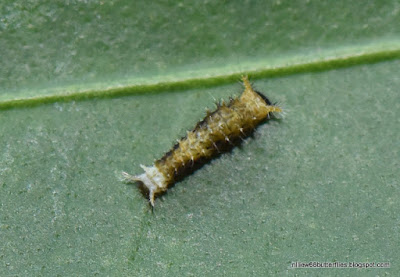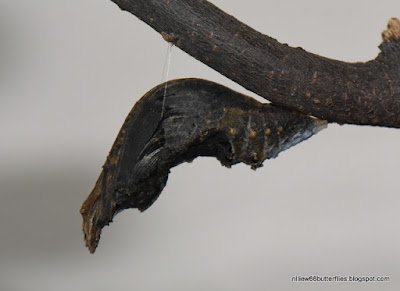This is perhaps one of the commonest larger-sized swallowtail in a forested area in Raub, readily recognisable by its white patch on its hidwings even in flight. It is a swift and strong flyer and can be readily observed visiting flowering patches in an open area or sandbanks by a stream later in the afternoon.
Habitat indicator
RSP
|
WV
|
PG
|
VF
|
FTR
|
SC
|
LWDF
|
LWPF
|
LMEF
|
UMN
|
MN
|
x
|
x
|
x
|
Frequency observation chart: (S marks the usual occurences, H marks an unusually high occurence, F for first record)
2013
| |||||||
Mac
|
Apr
|
May
|
Jun
|
Jul
|
Aug
|
Sep
|
Oct
|
S1S3
|
S1S3
|
S1S3
|
S1S3
|
S1S3
| |||
2013
|
2014
| ||||||||||
Nov
|
Dec
|
Jan
|
Feb
|
Mac
|
Apr
|
May
|
Jun
|
Jul
|
Aug
|
Sep
|
Oct
|
| S1-3 | S1-3 | S1-3 | S1-3 | S1-3 | S1-3 | S1-3 | |||||
2014
|
2015
|
||||||||||||
Nov
|
Dec
|
Jan
|
Feb
|
Mac
|
Apr
|
May
|
June
|
Jul
|
Aug
|
Sep
|
Oct
|
Nov
|
Dec
|
S1-3
|
S1-3
|
S1
|
S1-3
|
S1-3
|
S1S2
|
S1S2
|
S2S3
|
S3
|
|||||
2016
|
|||||||||||
Jan
|
Feb
|
Mac
|
Apr
|
May
|
Jun
|
Jul
|
Aug
|
Sep
|
Oct
|
Nov
|
Dec
|
S3
|
S1S3
|
S1S3
|
S1S3
|
S8
|
|||||||
2017
|
|||||||||||
Jan
|
Feb
|
Mac
|
Apr
|
May
|
Jun
|
Jul
|
Aug
|
Sep
|
Oct
|
Nov
|
Dec
|
S3S8S20
|
S3S20
|
S2S3
|
S
|
S
|
S
|
S
|
S
|
S
|
S
|
S
|
S
|
2018
|
|||||||||||
Jan
|
Feb
|
Mac
|
Apr
|
May
|
Jun
|
Jul
|
Aug
|
Sep
|
Oct
|
Nov
|
Dec
|
S
|
S
|
S
|
S
|
S
|
S
|
S
|
S
|
||||
2019
|
|||||||||||
Jan
|
Feb
|
Mac
|
Apr
|
May
|
Jun
|
Jul
|
Aug
|
Sep
|
Oct
|
Nov
|
Dec
|
2020
|
|||||||||||
Jan
|
Feb
|
Mac
|
Apr
|
May
|
Jun
|
Jul
|
Aug
|
Sep
|
Oct
|
Nov
|
Dec
|
27 March @ 13:37
28 April 2013 @ 12:35
Two shots from 08 May 2010 @16:53
Two shots from 05 May 2013 @ 11:47
A specimen resting : 24 April 2013 @ 15:24
31 May 2013 @ 12:54
A puddling group: 20 April 2014 @ 11:40
31 May 2014 @ 14:22
12:48
12:52
Above photos 15 Feb 2015
12:12
12:16
Above photos 26 April 2015
02 Jan 2016 @ 13:25
12 March 2017 @ 12:18
* * * * *
Life History of the Red Helen
The eggs are spherical, pale yellow and glabrous, laid on the young shoot of the Calamansi Lime tree. x Citrofortunella microcarpa . However, the caterpillars are polyphagous and feed on other plants of the family Rutaceae like Clausena.
the tiny 1st instar caterpillar
8 days later, the 3rd instar is still retaining its bird-dropping like camouflage which pushes through the 4th instar
Early 5th instar
late 5th instar
pre-pupa stage
the pupa is either brown or green
the pupa darkens prior to eclosion
newly-eclosed imago



























No comments:
Post a Comment